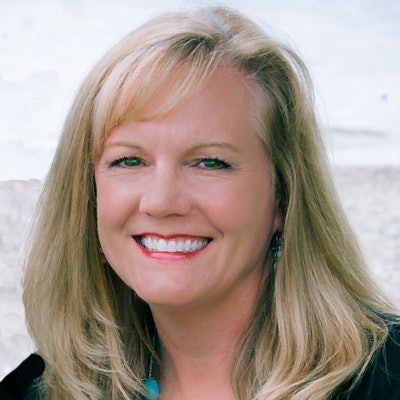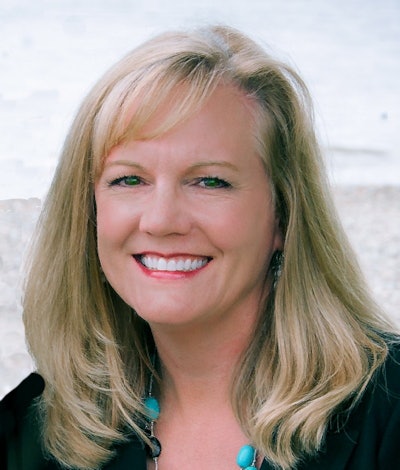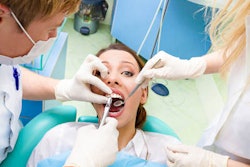
Taking the step to close your dental practice likely wasn't a decision made lightly. Unexpected events add stress to owners, employees, and patients.
The coronavirus disease (COVID-19) pandemic is an unprecedented event, but a crisis nonetheless. When faced with any crisis, the best move is not to focus on every news story and statistic. Instead, start planning for a smooth return after we all have helped flatten the curve.
Assess current workflow
 Kathy Edwards, RDH.
Kathy Edwards, RDH.Many states have mandated that dental practices be available to treat patients with emergencies to reduce pressure on already-taxed local emergency rooms. This requires you to contact previously scheduled patients and set them up with new appointments. Expect to field more calls, specifically from anxious patients. Also, you need to collect payments from as many patients as possible, which requires you to continue filing claims, track unpaid claims, and send requests for insurance company reviews.
Though this may seem like a lot to juggle, remember you should only be providing limited care during this time. Try the following steps to get on the right path to maintaining an ongoing workflow and a smooth transition back to full operations:
- Keep a part-time front office team member on the payroll for as long as the budget will allow. Ideally, this person will be cross-trained to assist with emergency care. If your budget can't handle it, you will need to take on these responsibilities.
- Be sensitive to unemployment hours. Offer hours to allow your staff to take advantage of state and federal programs.
- Reduce phone hours to four per day. Use the time to answer phones, return messages, and direct patients to emergency, after-hours information.
- Work on collections and reduce your aging accounts receivable. Review denied claims, file review requests, and collect money owed.
- Reschedule patients into the future to make sure you come back to a full schedule. Push patients out to the most recent return-to-work date you have from the authority in your state.
- Track patients who are uncomfortable rescheduling on a short call list, so you will have an immediate go-to scheduling list when you return.
- Identify patients who need treatment right away to prevent emergencies. Make sure you know what constitutes an emergency by checking the ADA's guidance.
Communicate with patients
Everyone knows about the pandemic. People are already anxious and on edge. Don't add to it. This is especially true for patients who have existing treatment plans. A needed filling may feel like an emergency to them. Calm their fears with good verbal skills when you reschedule them and communicate frequently with patients through social media during your closure. Remind patients to keep up with their oral hygiene and post fun things. Share what you are doing with your time or post a photo of a staff member weeding her yard or doing a puzzle. Anything that reflects life as normal with a daily reminder that you are still there, you are available for emergencies, and you hope everyone is staying safe and healthy.
Most importantly, do not send a letter to every patient, announcing the temporary closure of your office. It may create unnecessary fear for patients.
Talk to your staff
Now is the time to embrace that we're-all-in-this-together approach. Communicate often and let staff members know that you are still working on getting the answers to some of their questions. They will be looking for leadership and direction. Approach this the right way, and they are more likely to follow your lead.
Set up a group text so everyone can continue to connect. Share pictures and news and create a forum where they can ask each other questions. Also, share these budgeting tips:
- Increase cash flow by having spouses/partners of displaced staff temporarily stop all 401(k) contributions.
- Check with banks and utilities to see if you can defer payments to them.
- Provide them with federal and state program and unemployment resources.
Finally, send detailed updates via email to staff. Most answer texts quicker, so text them and ask them to check emails.
Find out about economic relief
The U.S. government is working on relief packages. Ask your certified public accountant (CPA) and attorney for the latest offerings to take advantage of the programs. With that in mind, these are some relief efforts you should keep on your radar:
- The ADA has requested relief for dentists. Check its site to follow its progress.
- The U.S. Small Business Administration is offering relief to businesses affected by the pandemic. Check the site for eligibility.
- Under the Families First Coronavirus Response Act that President Trump signed into law, small and midsize employers can take advantage of two new refundable payroll tax credits, designed to immediately and fully reimburse them, dollar for dollar, for the cost of providing COVID-19-related leave to their employees. Check out the Internal Revenue Service's guidance on the credits.
Additional return-to-work steps to consider
When you can open your practice's doors again, be ready. There should be a high demand for appointments. So, when you return, consider adding additional days and hours to your schedule. It will help you meet patient demand, provide opportunities for staff to make up lost wages, and increase collections more rapidly. Touch base with your staff as your return date gets closer to check availability.
Know your equipment and follow guidelines to restart and recalibrate. Plan to run test strips in sterilization equipment when you return. Run water lines using appropriate disinfectants.
Take steps to ensure a sterile environment. This crisis likely increased sterilization efforts. Figure out which will continue indefinitely and make sure your staff knows about them.
Try to consider this time as an opportunity
A crisis creates an opportunity to reevaluate your goals and your practice systems, and it allows for time to reflect on changes you would like to make in the future. This is an ideal time to determine growth opportunities for the practice that can be put into place on your return. It will also provide hope and synergy for your team.
Burkhart offers several no-cost analysis services to provide insight into areas where you are succeeding, as well as growth opportunities. Let me know if I can help.
Kathy Edwards, RDH, is Burkhart Dental Supply's senior practice consultant specializing in developing leadership skills to improve teamwork and key performance indicators for dental practices. You can reach Burkhart's Practice Support team at 800-665-5323 or [email protected].
The comments and observations expressed herein do not necessarily reflect the opinions of DrBicuspid.com, nor should they be construed as an endorsement or admonishment of any particular idea, vendor, or organization.



















